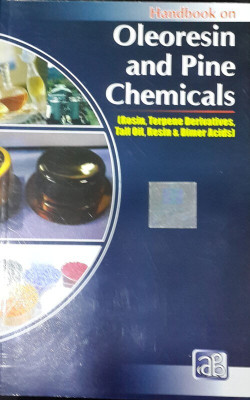Handbook on Oleoresin and Pine Chemicals: Rosin, Terpene Derivatives, Tall Oil, Resin and Dimer Acids 1st Edition(English, Paperback, H. Panda)
Quick Overview
Product Price Comparison
Oleoresin and pine chemicals are a fascinating group of substances derived from the sap of coniferous trees. This diverse family of products includes rosin, terpene derivatives, tall oil, resin, and dimer acids, each with their own unique properties and characteristics. Rosin, also known as colophony, is a sticky substance that is obtained by distilling the resin from pine trees. Terpene derivatives, on the other hand, are a broad class of compounds that are derived from terpenes, which are the primary components of essential oils in plants. Tall oil is a byproduct of the pulping process in the paper industry. It is obtained by extracting fatty acids from the black liquor, a waste stream generated during pulp production. Resin refers to the mixture of gum and resin obtained from pine trees. It is often processed to remove impurities and concentrated into a solid or liquid form. Dimer acids are a specific type of fatty acid derived from tall oil or other vegetable oils. They are created through a chemical reaction called dimerization, which involves the linking of two fatty acid molecules. Dimer acids are known for their excellent performance as raw materials in the production of various products such as coatings, adhesives, and synthetic lubricants. The global oleoresin market size is anticipated to witness a compound annual growth rate (CAGR) of 6.9%. Growing demand from healthcare, pharmaceutical, food, and beverage industries are driving forces of the global oleoresin market. Oleoresins are made from varied ingredients and spices, which are found all around the world. It is usually found in semi-solid extract form. A variety of oleoresins has multiple characteristics based on the spice they are derived from. They exhibit numerous therapeutic as well as antioxidant properties as well and are utilized in the pharmaceutical, healthcare, food, and beverage industries. The European region led the market with a revenue share of more than 30%. This is attributed to the increasing demand for flavors and coloring agents from the food & beverage industry. Another factor contributing to increased demand for the product in the region is the demand from cosmetic, fragrance, and personal care products industries that act as a hefty end-use industry for oleoresins. The Major Contents of the books are Pinus, Oleoresin Extraction, Processing of Oleoresin, Rosin Derivatives, Terpene Based Adhesives, Essential Oil, Wood Turpentine Oil, Turpentine Products, Tall Oil, Dimer Acids.A comprehensive reference to manufacturing and entrepreneurship in the Oleoresin and Pine Chemicals products business. This book is a one-stop shop for everything you need to know about the Oleoresin and Pine Chemicals products manufacturing industry, which is ripe with potential for manufacturers, merchants, and entrepreneurs. This is the only comprehensive guide to commercial Oleoresin and Pine Chemicals products manufacture. It provides a feast of how-to knowledge, from concept through equipment purchase.


